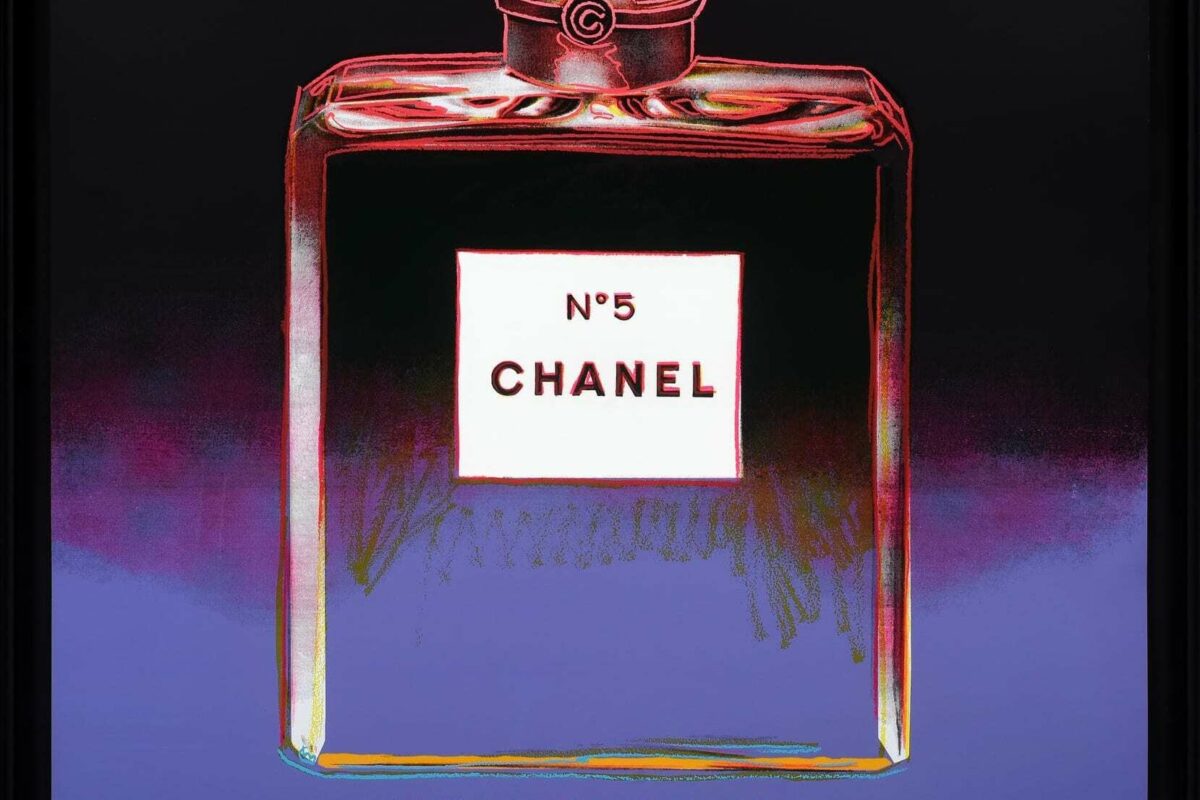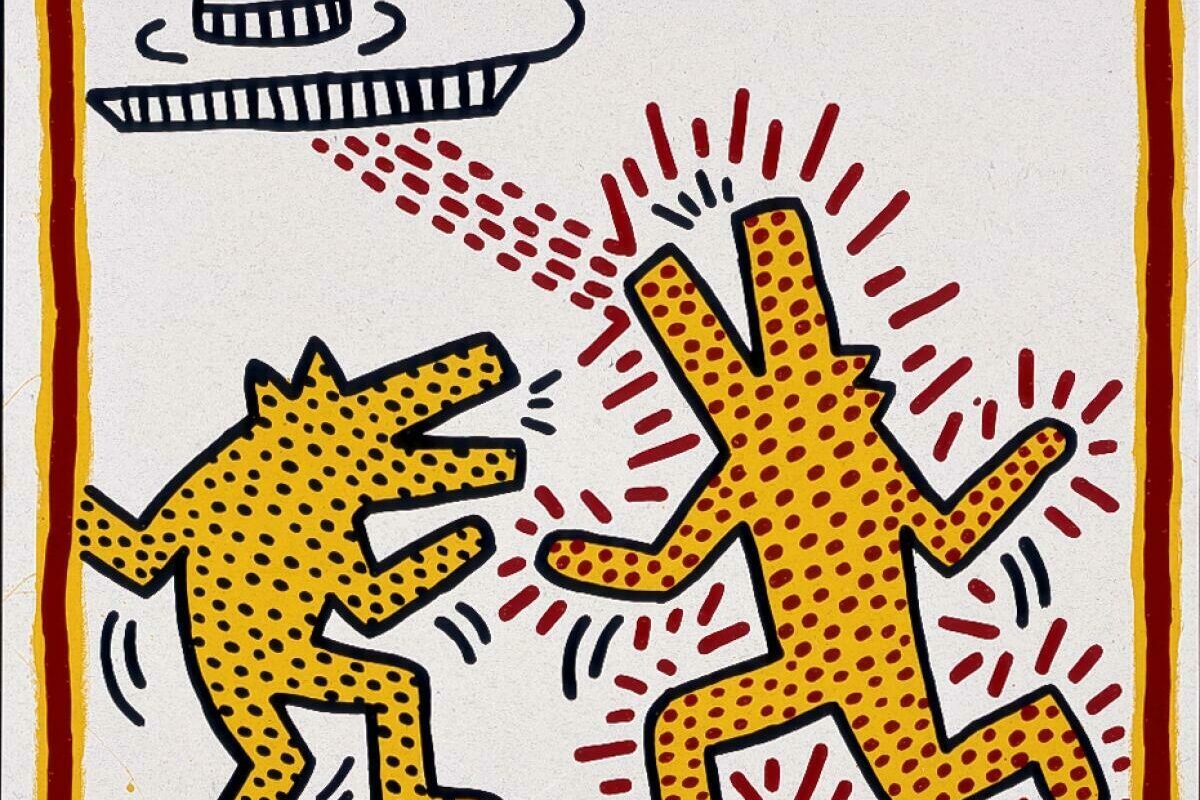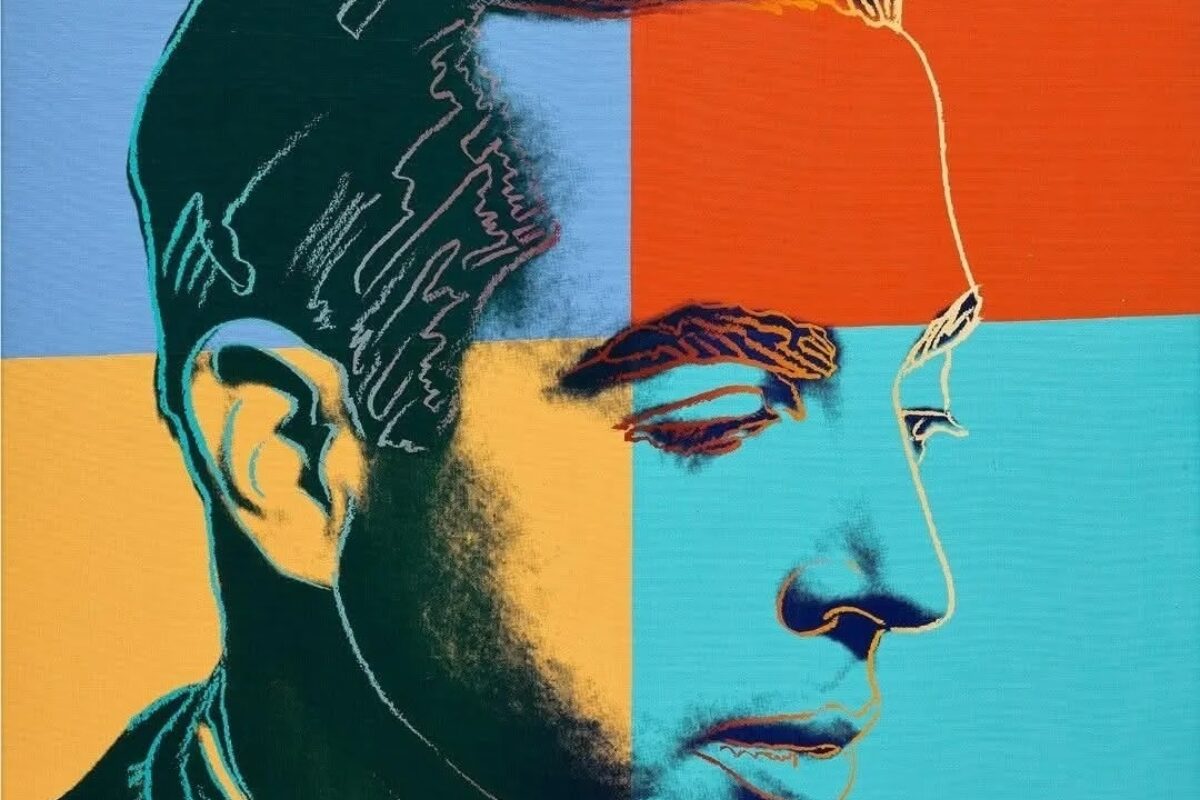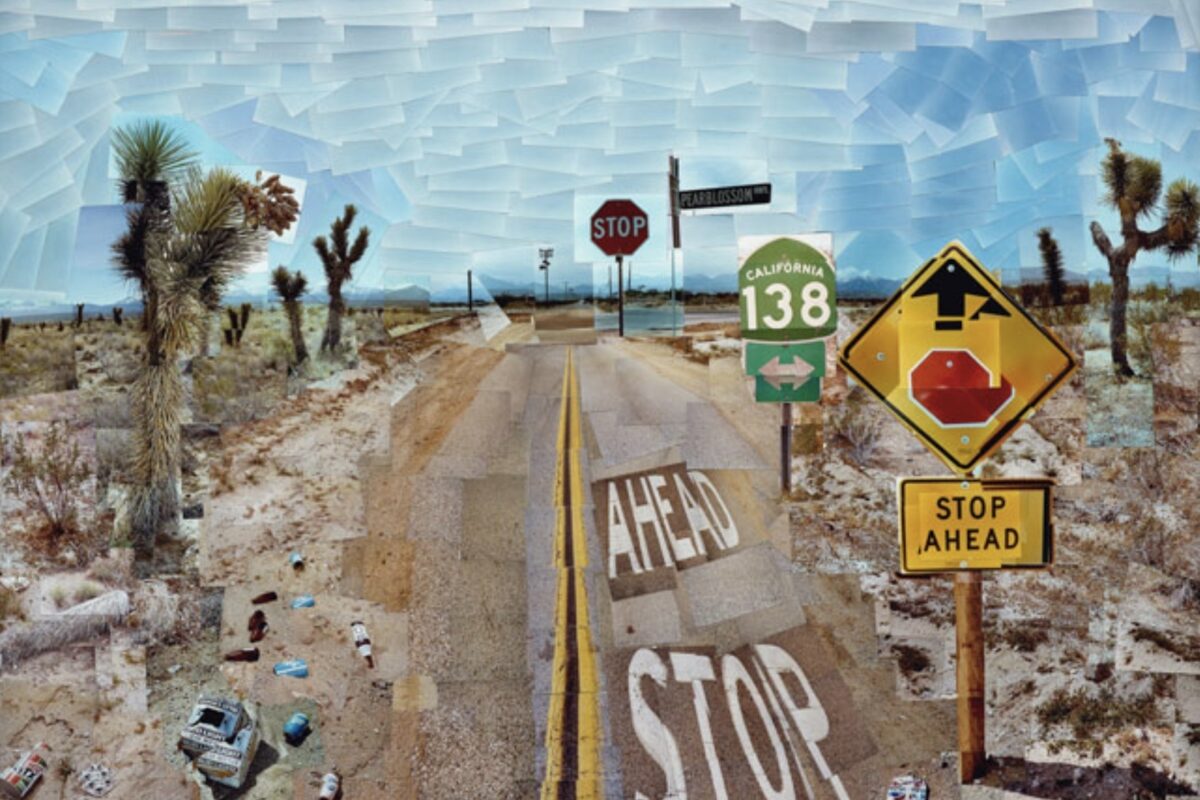On International Women's Day, we asked the female members of the Hang-Up team to choose their favourite pieces by female artists, and tell us a bit more about what the gallery is doing to bridge the gender divide.
Art Consultant Fabiola Giaccherrini chose Blue Madonna by Tracey Emin
Whether you like Tracey Emin or not, it’s impossible not to admire her honesty. Her work comes across as very genuine because she’s not afraid of airing her failures and her most intimate feelings. She works like this despite all the judgement that comes from life as a woman, she’s quite brave.
I’m not sure why I chose this work in particular – it was almost an unconscious decision. I think you’re often drawn to things initially without knowing why. I guess that, as an Italian, religious imagery is embedded in my roots. It’s a very religious country and I studied in Rome where religious art was everywhere. But I like the way Emin has taken the icon of the Madonna and turned it into a self-portrait. It makes it more accessible and natural somehow. For her, it’s more to do with spirituality than traditional religion.
I love Emin’s textile work too. I’m drawn to the look of textiles and the craft behind it because it feels intimate and slower than some other mediums. Again, with her textiles, I think she’s upended a medium which is traditionally related to women.

Blue Madonna by Tracey Emin, 2020, lithograph on paper.
Another female artist who I really admire is Leonora Carrington, one of the last surviving surrealists (she died in 2011). Many people in Europe only know her for her relationship with Max Ernst, but she was strong and talented in both painting and writing, and she reveals so much of her life in her work: I love her short stories. I like Dora Maar too, the painter and photographer who I suppose is best known for her story with Picasso. Both artists were overshadowed by their relationships with male artists, which is grossly unfair.
Why should we support female artists?
These days, by supporting female artists I believe that we’re taking part in a discourse about inequality in art that stretches into race, gender and birthplace. It’s important to understand different perspectives in order to take a step forward in society in general. When something is so rooted in culture, it’s a long process to eradicate those ideas, as with any big change.

El mundo mágico de los Mayas by Leonora Carrington, 1963-1964.
Gallery manager Laura Rivas-Lopez chose Start by Bridget Riley
What I love about Bridget Riley is how her work perfectly reflects her growth, development and experimentation as an artist and as an individual – from her early works, with the simplicity of a few lines and geometrical shapes in black and white, to the dazzling full of colour arabesques and figures of her more recent creations. The piece I’ve chosen is called Start. It’s a medium-size screenprint on paper, with a combination of intertwined curves and diagonals that evoke flags, ribbons or even flames in perfectly matching blue, green, ochre and white. I like how, at first, it looks like a chaotic scene that’s impossible to follow, but once you let your eyes relax and navigate through the lines, you start feeling the mesmerising effect that Riley has on the viewer.
Riley did an early piece called Kiss that I also particularly like. More than the image itself, it was the artist’s explanation on how it was created that made me fall for it. I heard Riley talking about how she began working on this piece after a breakup. She started by painting the whole canvas in black (which was quite fitting), but later she moved towards finding balance. She did it through opposites, first with a white line across the painting to complement the black and after with a white curve to balance the line. I found the explanation so poetic.

Start by Bridget Riley, 2000, screen print on paper.
There are lots of other female artists I admire, including Nancy Fouts, Barbara Kruger, Jenny Holzer, Yayoi Kusama, Doris Salcedo…and my beautiful Frida Kahlo. I love her resilience. She had such a tough life and suffered so much physical and psychological pain, but she managed to create beauty out of it all. I went to the Frida Kahlo exhibition at the V&A a couple of years ago, and spent hours and hours there. It was so special to have a glimpse into her life.
Why should we support female artists?
Unfortunately, the art world still shows the gender inequality that women face in almost every industry, with only two women ever breaking into the yearly top 100 auction sales figures. Supporting female artists is essential to help end the gender gap, but also because art can work to highlight and bring attention to social inequalities, some of which can only be spoken from the female experience.
What do you like about working in a (nearly!) all-female team?
We are a mostly female team, and I feel extremely privileged to work and be surrounded by such strong and inspiring women on a daily basis. We all have very different personalities, we are from different countries, and we’re all different ages, but it’s all the differences that I love the most. I’m always learning from them on both personal and professional levels. Knowing we have each other’s backs both inside and outside work is an amazing and comforting feeling.

Kiss by Bridget Riley, 1961.
Art consultant Amalia Papaioannou chose Baby Nest by Nancy Fouts
I really like Nancy Fout’s work – there’s pure fun and wonder in every piece. I’ve got to know much more about the artist and her work since I started at Hang-Up and she was a total badass. She apparently had these brilliant all-night parties!
I love the way she often takes two elements and brings them together to create a new composition: in this case, it’s the bird’s nest and the belly. The combination of two nurturing environments is sweet, it shows the fragility of the state of pregnancy which is something I hadn’t considered before. I like that the print is taken from a real, two-dimensional model and hasn’t been digitally manipulated. Fout's model-making is one of the things that make her unique – we were lucky enough to have some of her original sculptures in her retrospective exhibition, Fags, Birds and a Couple of Guns, and they are extraordinary.

Baby Nest by Nancy Fouts, 2010, giclée print on paper.
I have a long list of other female artists I admire too, including Njideka Akunyili Crosby, Nina Chanel Abney, Mickalene Thomas, Swoon, Delphine Lebourgeois, Cassi Namoda, Georgia O' Keefe and so many more. I love Jenny Holzer’s work. She got me interested in textual art through the way she incorporates different media and environments into the delivery, which adds a new dimension. Whether its light sculpture, the use of advertising billboards or large projections on buildings, the results are incredible and reach beyond the gallery space. She worked at the time when there weren’t many female conceptual artists, but it was Holzer's different perspective that made me appreciate the movement.
Why should we support female artists?
I hope that eventually we won’t draw distinctions between male and female artists, but women have been left out of art history books for too long and their contribution has been ignored. I think it’s important that we pay attention as the balance shifts and buyers broaden and enrich their collections with work from different artists and intersectionalities.

Dwell: Me, We by Njideka Akunyili Crosby, 2017
Business Development Manager Charlotte Bain chose Whatever by Delphine Lebourgois
I love the storytelling aspects of Delphine’s work. I seem to always find another little detail when I look at her drawings or editions. The piece I’ve chosen depicts a lady reclining on a hot pink blow-up flamingo – I like the way absolute carnage is ensuing around her (albeit in muted colours), but she’s just chilling! I’ve always loved the concept of a dichotomy (the yin and yang, positive and negative, two opposing visual constructs framed in one image) so this piece ticks all the boxes for me. I also like the title, which reminds me of a mantra: ‘Whatever”. I know I’m guilty of overthinking or caring too much so it’s a nice little reminder to let things go.
I also really love Lebourgeois’s original drawings on Japanese paper. Fear, for example, is such a beautiful and delicate object. The way she creates an image through clear and concise lines shows off her talent and illustration ability.

Whatever by Delphine Lebourgeois, 2019, inkjet print with varnish overlay on paper
There are so many other female artists I admire: Cornelia Parker, Rachel Whitread, Agnes Martin, Zaha Hadid (I know she’s an architect, but I’d say that still counts), Joy Labinjo and Antonia Showering to name a few. We need to be proactive in supporting female artists, otherwise the status quo will remain. As a gallery, the ratio of female artists we work with on the primary to secondary market has been always positive, and it will continue to increase. The day that we have 50/50 male:female ratio will be a good day – it’s something that we’re striving towards!
What do you like about working in a (nearly!) all-female team?
We’re all close at Hang-Up and there’s a sisterhood that forms, quite naturally, when working in a tight knit group. I’m not convinced it’s to do with being male or female, but there’s nothing better than working somewhere when you know someone’s got your back.

Man Drinking Coffee by Joy Labinjo, 2019
More editorials about Bridget Riley
Art Market
The Hang | Your monthly round up of Art Market based News
31 Jul 2025 | 4 min read

Art Market
Market Watch: Auction highlights | RESULTS Part 2
7 Mar 2025 | 2 min read

Art Market
Market Watch: Auction highlights | RESULTS
3 Mar 2025 | 2 min read

Art Market
Market Watch: Auction highlights | Part 2
1 Mar 2025 | 2 min read

Art Market
Market Watch: Auction highlights | Part 1
24 Feb 2025 | 2 min read

Art Market
12 Moments of 2024
30 Dec 2024
Artists
All Things Bright and Beautiful
10 May 2023 | 3 min read
Artists
A Brief Retrospective of Bridget Riley
28 Mar 2023 | 5 min read
Art Market
Art Market Insight | What, Why and How To Invest
19 Jul 2022
More from Artists
Artists
The Diverse Techniques of Yayoi Kusama
21 Aug 2025 | 2 min read

Artists
Haring Decoded: The Symbolism of His Iconic Dog
12 Aug 2025 | 2 min read

Artists
Happy Birthday Andy Warhol, The King of Pop Art
6 Aug 2025

Artists
The Psychology of Kusama
14 Jul 2025 | 3 min read

Artists
From Rothko to Ruscha: Unpacking Harland Miller’s Influences
10 Jul 2025 | 3 min read

Artists
Decoded: David Shrigley
8 Jul 2025 | 2 min read

Artists
Is David Hockney the Most Important Living Artist?
2 Jul 2025

Artists
Top 10 Selling Warhol Sets
15 Jun 2025 | 2 min read

Artists
David Hockney | 5 Groundbreaking Moments
23 Apr 2025 | 3 min read
